How Modern Science Evolves Our Theology of Church and Culture
This article originally appeared on June 8, 2020 at Medium. It was a paper that I submitted for a class at Northern Seminary.
In our previous article, we looked at how the Catholic, Lutheran, Reformed, and Anabaptist traditions have seen the relationship between church and culture. Each of these traditions were rooted in an origin story that, though very different from one another, still held to the traditional Christian narrative of the universe being Creation, Fall, Redemption, and Restoration. While each of these views have brought some strengths to the table, they fail to engage the scientific and metaphysical reality that we have come to learn about the universe. I will be proposing a radically different understanding of the cosmos that can remain connected to orthodoxy, fully accept our modern understandings of the universe, provide an infinite space for future growth, and transform the relationship between the church and culture through making disciples with a complexity, depth, and unity that the other four traditions do not have.
While there have been some theologians who have accepted the reality of evolution, there has not been a widely embraced interest in reconsidering Christian theology in light of our new understanding of creation. The materialistic view of many modern scientists tends to see the universe through a metaphysics of the past, in which the complexities of present reality is interpreted through the simplicity of the pure subatomic matter that was formed in the Big Bang. In other words, nothing truly new is ever created, and there is no ultimate end to hope for. Traditional Christian theology sees the universe through a Platonic metaphysics of the eternal present, in which the universe created complete and innocent has fallen, in which the fullness of reality lies in an immaterial world that is free from development, in which the particular of the self is disconnected from the fabric of the universal. As a result, the cosmic pessimism that is rampant among mainstream scientists fosters little interest in engaging theologians, the growing awareness of scientific consensus contrasted with the conservative evangelical origin story among young people feeds doubt in the Christian faith, and the overall practice of the church works against the mission it has been called to participate in. If evolution is true, then it is how God has chosen to create the universe, and should have implications for how we co-create with God.
Origin Story
The French Jesuit and scientist Pierre Teilhard de Chardin proposed that we move toward a metaphysics of the future, in which the entire universe is converging toward greater union, complexity, and depth. For the church to be fully engaged in its purpose, I believe that a metaphysics the future is the origin story we need to live into.
Union
The universe began almost fourteen billion years ago as a singularity in which matter, energy, and the laws of nature were unified. The Big Bang caused the singularity to rapidly expand, allowing both matter and anti-matter to form. The first millionth of a second was filled with the creation, death, and resurrection of quarks and antiquarks, electrons and positrons, and neutrinos and anti-neutrinos. As the universe expanded, it cooled, which allowed the union of multiple quarks into single hadrons. The unifying of subatomic matter and energy continued to eventually include particles, which unified to form atoms, which bonded to form molecules. As gravity began to pull matter and energy together in a circular dance, a hundred billion galaxies began to form. Within these galaxies, stars developed, which would create the heavier elements within the thermonuclear fusion of their cores that would one day be needed to produce life. However, the stars had to die and explode in order to spread their life producing heavier elements from within their cores throughout their galaxies. After nine billion years of creation, death, and resurrection for the life of the other, our sun was born. The gravitational force of our sun caused the collision of debris, which united to form planets. And as at least one such planet began to cool, it contained within itself the fourteen billion year old living, dying, and resurrecting elements necessary to create new life. The entire universe is an unfolding becoming of complete union across time and space that we can see within the particularity of our human bodies.
Complexity
Bernard Lonergan was a 20th Century Canadian Jesuit priest and philosopher who took Teilhard’s ideas to a more complex level. He introduced emergent probability, which combines classical laws and statistical laws in order to show how often certain conditions come to pass. He referred to the development of the universe as “upwardly but indeterminately directed dynamism.” On Earth, as bacteria became more complex, it eventually met the probability to bring about greater diversity. Initially, these complexities produced animals with simple nervous systems. Then as those animals became more complex, the probabilities produced even more complicated animals. Eventually, this would lead to the emergence of humanity, which is not only a more complicated animal, but eventually became an entirely new species of conscious life with the capacity to co-create. This complex tree of life is what scientists can explore today through the fossil record and the genome.
Now that humanity has reached an unprecedented level of interacting with technology, our entire experience of reality is drastically changing. Martin Heidegger explored the effects of technology on our being and presence in the world. Because our minds and bodies have been evolving in nature, the introduction of the unnatural in technology that we can command is giving us a level of control over nature that we have never had before. The increase of human control brings an even greater complexity to the universe that introduces an entirely new set of opportunities and challenges. Albert Borgman explores how technology has taken us away from some of the more community oriented activities around focal things such as fireplaces and food to devices that do the work for us and take away the community oriented activities that we once had. Borgman is correct in his assessment of what we have lost. However, technology has also allowed us to gain more time and access to explore one another and the universe. Ilia Delio says, “We can assess whether or not we are on the right path with our technologies if love deepens in the human community as a unifying thread.” The scientists that I have talked with have told me that they believe technology will speed up the evolution of humanity far faster than we have evolved in the past. While the universe is an unfolding becoming of complete union, it is also an unfolding of greater complexities as matter gives way to consciousness, and consciousness to freedom. We now find ourselves between consciousness and freedom. But the complexities of our evolutionary past, our technological present, and our inclination toward sin led Lonergan to embrace Teilhard’s view of the universe’s journey toward the Omega that was evident in the universe’s development toward unity, while also acknowledging the open, undetermined progress that comes through the probabilities of a co-creating universe.
Depth
As the universe has evolved into humanity, each successive stage has contained within it the depth that comes from the unity and complexity of the previous stages. Particles are bonded in the atom. Atoms are bonded in the molecule. And thus, an ever increasing depth emerges over time. As a result, each human contains within their cells the journey of the entire universe.
In Theological Territories, David Bentley Hart affirms and explores Lonergan’s views of consciousness and grace. Hart argues that knowing and being are the disclosure of a single fullness that comes progressively not by acquiring knowledge, but by asking questions. Hart says that questioning is not merely about being, but “It is being, in being’s movement of self-disclosure” that is birthed from a desire for “self-transcendence toward the horizon of being as a whole.” Questioning “why” reveals our desire to understand ourselves, and those around us as finite beings who live, move, and have our being in the infinite of God. Our desire is for an infinite knowing and being with the infinite, which is an inexhaustible evolutionary depth. Hart sharply criticizes the Calvinistic view of God pre-determining every moment of history before it happens while somehow escaping culpability for evil because such a pre-determined causality defies what we understand regarding the nature of evolution, and because it would erase human dignity and agency down to compulsion. Instead of the Calvinistic metaphysic of the past predetermining the future, Hart embraces the metaphysic of the future that acknowledges the dignity and agency of individuals within emerging probability, yet affirms that the universe is constantly moving toward greater unity, complexity, and depth. For Hart, as for myself, the justice we seek is always restorative, and is sourced teleologically from the Omega point of the entire universe being drawn toward the One in whom it lives, and moves, and has its being.
The Omega and Christogenesis
Teilhard believed that the universe evolving in unity, complexity, and depth reveals that it is being pulled into a hyper-personal Omega Point. Rather than being a vague universal consciousness that we will never experience, he postulated that the Omega Point would be a “synthesis of centers, center to center.” It would be the uniting of individual, personal centers with no annihilation of each center. This uniting could be nothing less than love, since love alone “is capable of uniting living beings in such a way as to complete and fulfill them, for it alone takes them and joins them by what is deepest in themselves.” The deepest part of ourselves is that we are particular embodiments of the universal story. Of course, the future cannot be proven. It is a matter of faith. So for Teilhard, as for myself, the story of Jesus Christ provides a very coherent convergence of these realities and hopes. He is the “firstborn over all creation…and all things hold together in him…For in him all the Fullness was pleased to take up a dwelling, and through him to reconcile all things to him, making peace by the blood of his cross, whether the things on the earth or the things in the heavens (Col. 1:15–20).” Into the human Jesus, the universe had evolved. As the human Jesus, God incarnated. And just as the universe flows in rhythms of life, death, and resurrection for the life of the other, Jesus also lived, died, and resurrected for the life of the other. The origin story of the cosmos is the Omega story of the Christ.
The Body of Christ
The Bible tells a story of God choosing the particular to bless the universal. It speaks of God choosing Abraham in order to bless all the nations (Gen. 22:18), Israel to be a kingdom of priests on behalf of the nations (Ex. 19:5–6), Jesus to bring grace, righteousness, and life to all men (Rom. 5:17), hardening of Israel temporarily and partially in order to draw in the fullness of the Gentiles (Rom. 11:25), and binding everyone to disobedience in order to have mercy on all (Rom. 11:32). The people of God are a particular body that overflows in love for the universal.
The contrasts between the Law and the teachings of Jesus are quite striking. Perhaps one of the clearest contrasts lies in Jesus’s statement, “You have heard that it was said, ‘An eye for an eye and a tooth for a tooth.’ Whereas I tell you not to oppose the wicked man by force.” Of course, where they had heard that said was in the Law (Deut. 19:21). Even though the Law was an evolutionary step toward love from the surrounding nations laws, it was still quite brutal and a far cry from the Way of Jesus in the Sermon on the Mount.
Yet, despite the applicational differences between the Law and the Way, the center of both the Law and the Way were identical. The center of each was to “Love the Lord your God out of your whole heart and out of your whole soul and out of your whole reason and out of your whole strength” and to “love your neighbor as yourself.” (Lev. 19:18; Deut. 6:4, 5; Mark 13:30–31).
When you consider what we now know scientifically about how God grows the universe developmentally over time through evolution into the center of love, it makes perfect sense that both the Law and Jesus’ teaching would identically center on love, and yet would reveal an evolution in the embodiment of love from one context to the other.
When we bring this entire conversation into our context, the church’s relationship with the culture becomes more clear. We have been called to love ourselves, our neighbors, and God as we evolve in greater unity, complexity, and depth until our center becomes relationally one with the centers of our neighbors and God, and Christ is all in all.
Love of Self
I’ve often heard pastors discuss Jesus’ command to love your neighbors as yourself by saying that we already love ourselves. Yet, when I hear how so many conservative evangelicals treat themselves, it becomes clear that they do not love themselves. With the origin story that we have fallen from a state of perfect bliss, we tend to label humanity primarily as fallen, depraved, untrustworthy, and as a problem. Some even label the evidences of love and kindness on the earth as filthy rags and dung. We set up a retributive justice theology where the Father exhausts his wrath on Jesus at the cross for a few of us, plans to torment the rest forever in a fiery hell because they deserve it, and can look at the few He chose to save only because He’s actually looking at Jesus instead of them. In his sermon, Sinners In the Hands of an Angry God, Jonathan Edwards said that God sees us as loathsome, that God abhors us, and that we are abominable. The statement, “Our identity is in Christ,” sounds good when it’s spoken with a smile. But when set in retributive theology, it becomes code for, “God doesn’t like you. He only allows you to be around Him because He’s actually looking at someone else He took His anger out on.”
This fall and retribution theology shapes our identity and view of God in ways that are incompatible with evolutionary love theology. Evolutionary theology sees God growing the universe into humanity. Of course, we have remnants of our animalistic past that subconsciously haunt and drive us. But evolutionary identity centers us in what we are becoming, which is based on the origin story of the universe being filled and united in Christ who becomes all in all. It reveals God as a good gardener, rather than an infinitely more violent version of your angry dad.
In 2015, I began a journey with the 10,000 Fathers Worship School. Dave Rhodes told us, “You can only surrender as much as you know about yourself to as much as you know about God.” He said that we needed to have both God-awareness and self-awareness. Yet, I had never even thought about the concept of self-awareness. After beginning to reflect on my life story that evening, I came to realize that I had no idea how hurt I was. My entire life had been shaped by very deep subconscious wonders and wounds in my core that I wasn’t even aware of. Over the next year, they walked me through grieving these wounds, listening to others, and beginning to discover how God had created me as a work of art. Could it be that God actually likes me?
The church should begin by introducing their congregations to themselves. By embracing the origin story of the universe, and walking their congregations through spiritual healing, the church can help her people see, know, and love themselves as image bearers who have been declared to be very good, and who are being grown from stardust toward greater unity, complexity, and depth. This vision is not meant to cover over our failures to love. To the contrary, entering into the core of one self leads to many deaths and resurrections of self. And just as the core of a long burning star dies and resurrects for the life of the galaxy, so the church can enrich its people at their core to see and love themselves, to see God delighting in them from His core, to wonder how God may even love their neighbors in the same way, and then join with God in the co-creating supernova of death and resurrection for the love of their neighbors.
Love of Neighbor
It’s easy for people growing up in conservative evangelicalism to love people who are mostly like them. But for me growing up, the ultimate outsider was the LGBTQ community. I was taught according to our interpretation of Romans 1 that they were so unthankful and self-centered that God turned them over to homosexuality as punishment. We constantly lived in fear that God would punish us by making us gay, that Disney would make a movie about a gay character, and that the Tribulation would start a few weeks later.
For twenty years, I have provided floor and janitorial cleaning services for businesses. You can tell a lot about someone by how they treat the janitor. And by far, the most self-giving, caring, loving customers I’ve had have been my LGBTQ customers. Their love for me, along with my growth in loving myself, led me to see them not simply as a category, but as beautiful image bearers of God, as brothers and sisters in the earth. Seeing them as such, I have been able to build relationships with them in ways I never would have been able to before. As I shared with one of them how his love for me over the course of three years helped me to see and love him in return, he broke down crying. The LGBTQ community feels so cut off from retributive Christianity. My prayer is that as churches help their people to love themselves, they will heal enough to evolve toward love with their LGBTQ neighbors as well.
St. Francis of Assisi saw all of creation not only as our neighbors, but as family. He saw creation as the image and overflow of the Trinity, which is a “community of relationships out of which creation emerges.” Bonaventure spoke of all creation as, “the fountain fullness of God’s expressed being.” John Duns Scotus taught that Christ was the blueprint of creation by which the univocity of all created things say something about God because they are sacraments of God. Teilhard de Chardin included the insights of modern science to open up an entirely more unified, complex, and deep understanding of how God is filling and uniting the cosmos.
This approach will cause many questions for Christians regarding the nature of the Bible, theology, sexuality, atonement, politics, war, and final judgment. Thankfully, there are many people who are helping Christians today evolve toward love and restorative justice in these areas.
Love of God
Love of self and neighbor flow from and into the love of God. The way we relate to our culture speaks of how we see God. If God is retributive and violent, then we will reflect that in our image bearing. But as we’re seeing in America today, retributive theology and redemptive violence fuel separation from self, neighbor, and God. We need to move the church to reject eternal conscious torment because of what it says about God, and how it cultivates a fear that keeps us from fully trusting and loving God. While some are turning to an annihilationist view of judgment for non-Christians, that only allows restorative justice to happen for a few, and says that God and the church will only go so far toward their neighbors. If justice is restorative, then annihilating any person in the universe says that God did not bring justice to them. But a teleological universalist embrace of evolutionary creation and love draws us inexhaustibly into love of self, neighbor, and God from and in whom we all live and move and have our being.
Conclusion
My desire would be to see the church evolve toward a universalist gospel with an anabaptist ethic. Anabaptist theology focuses on the particularity of Jesus’ Way of non-violent, co-suffering love of neighbor, yet too often falls short of embracing the universality of Christ becoming all in all. Unitarian universalism misses the Jesus Way of self-giving, co-suffering, non-violent love that Anabaptist theology brings us.
Science teaches us that all the laws of the universe are present everywhere, that what is true in the particular is true in the universal. The Eucharist shows us that the universal presence of Christ appears in the particular. So may the church be a Eucharistic presence in the world by embodying the particular Way of Jesus until Christ is all in all.

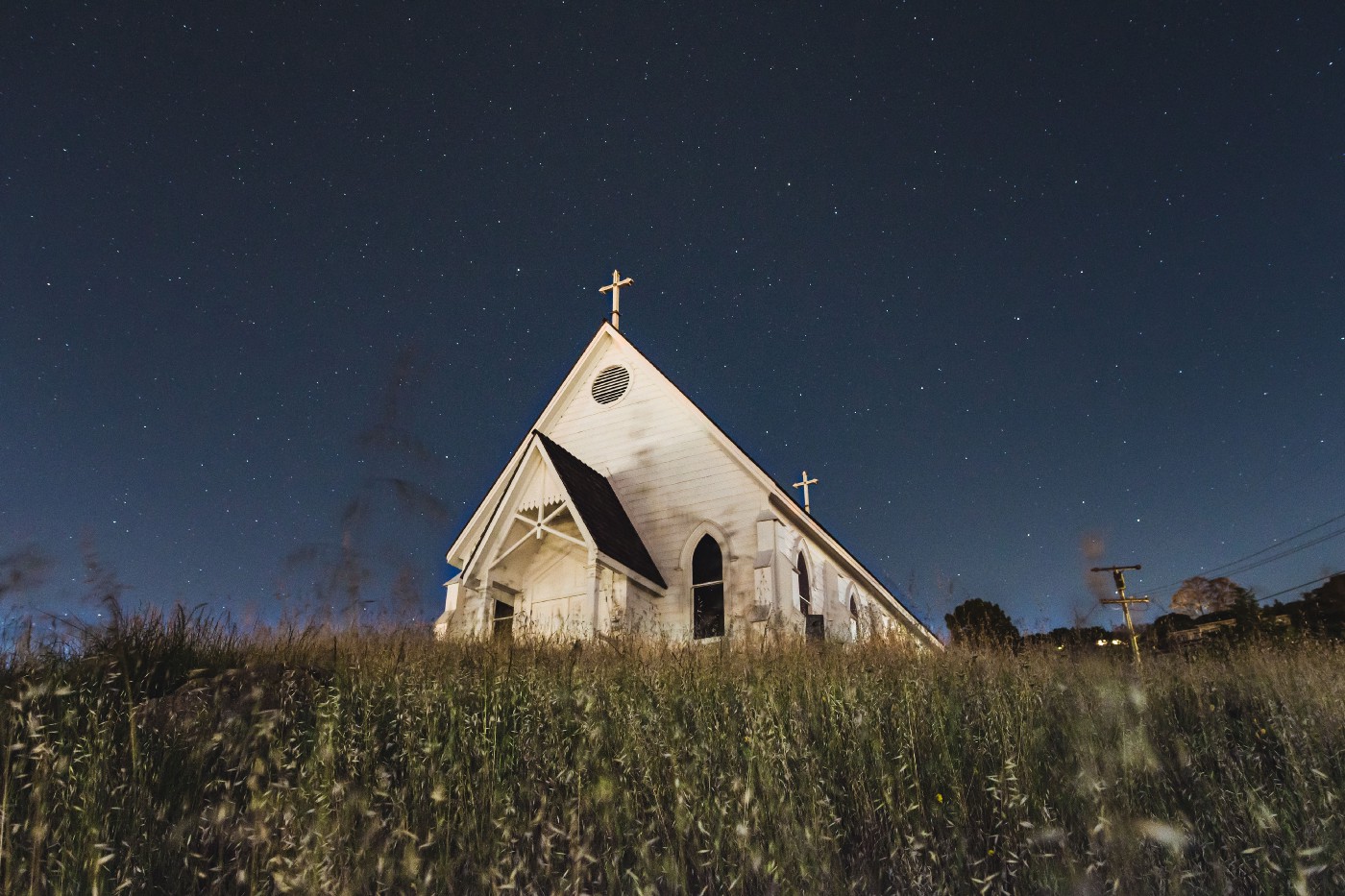
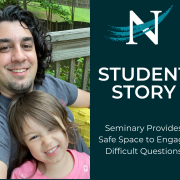
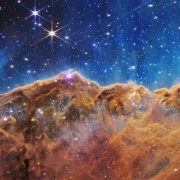


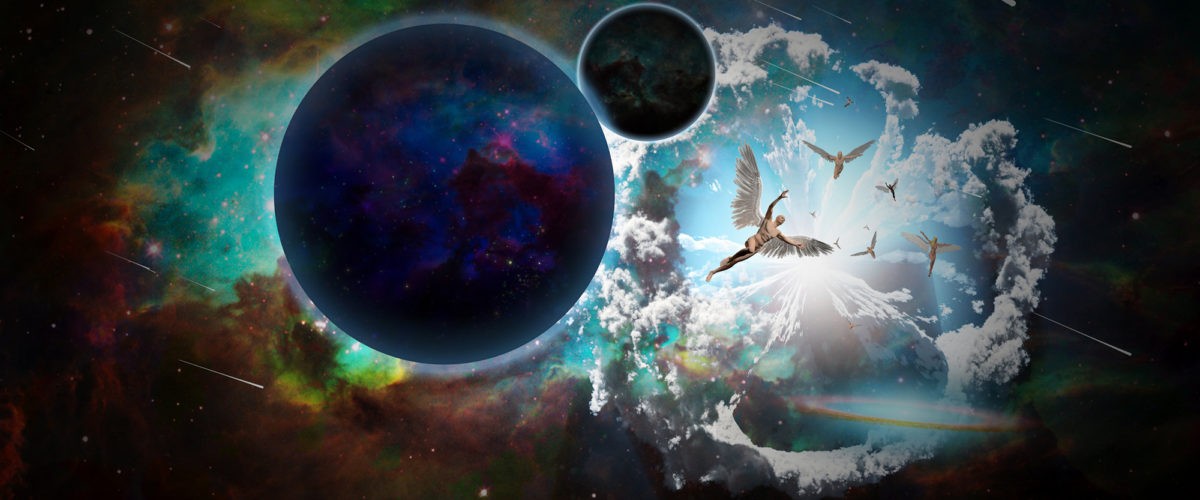


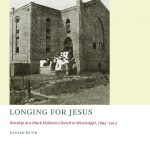
Leave a Reply
Want to join the discussion?Feel free to contribute!